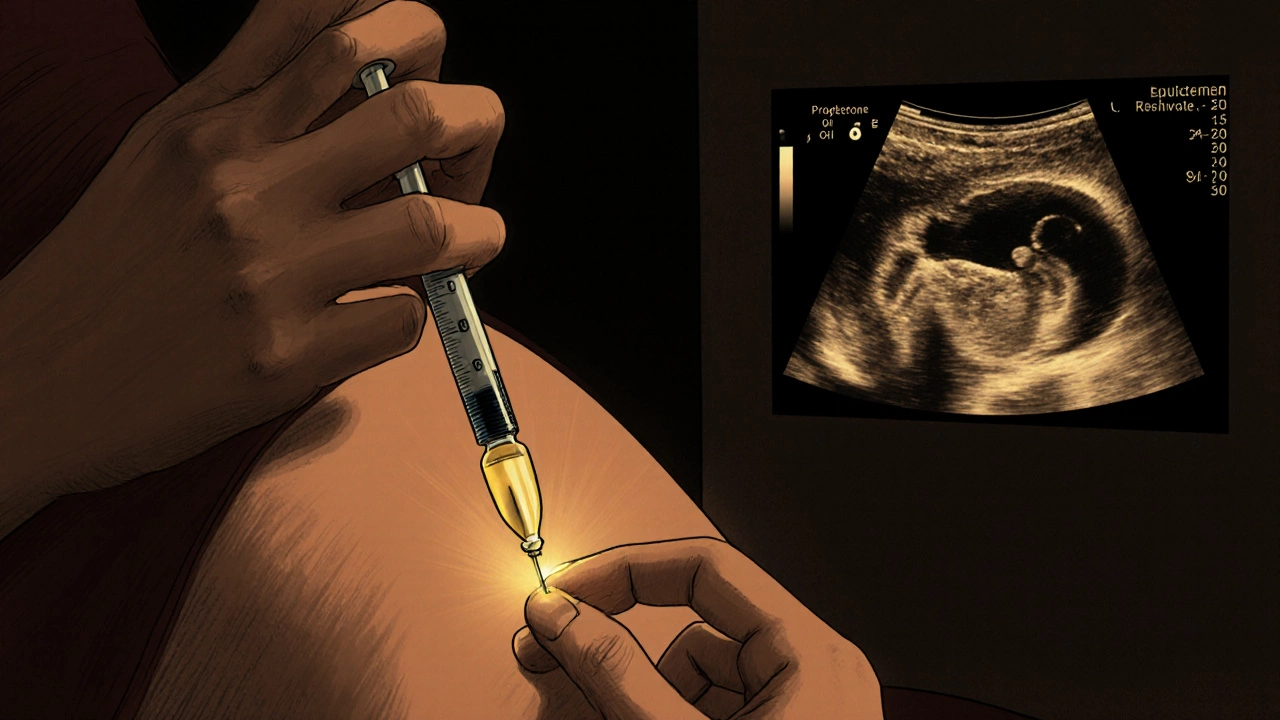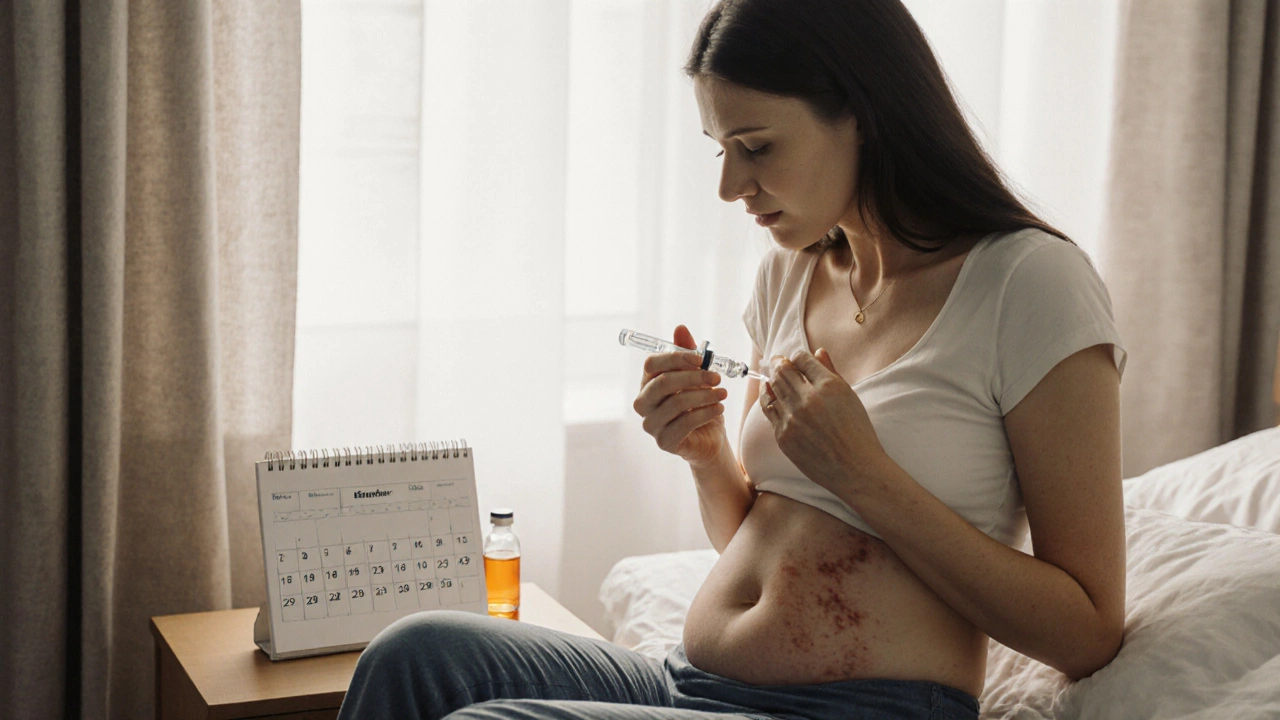IVF Shot Pain Estimator
How Comfortable Will Your IVF Shots Be?
How It Works
Based on clinical research and real user experiences, this calculator estimates your discomfort level using factors that significantly impact pain perception during IVF injections.
Pro Tip: The most effective way to reduce pain is combining multiple techniques. Warming medication AND pinching skin can lower discomfort by up to 5 points!
Your Estimated Pain Level
Average discomfort level. You're using some helpful techniques.
When you first hear you’ll need daily IVF shots, your mind races: How painful are IVF shots? Is it like getting a flu jab? Or something worse? The truth is, most people find them far less painful than they expect - but that doesn’t mean they’re easy. The discomfort isn’t just physical. It’s emotional. It’s the fear. The exhaustion. The feeling of your body becoming a lab. Let’s cut through the myths and talk about what it really feels like.
What do IVF shots actually contain?
IVF shots aren’t one type of needle. They’re a mix of hormones your body doesn’t make enough of during treatment. The main ones are:
- FSH (Follicle Stimulating Hormone) - tells your ovaries to grow multiple eggs
- LH (Luteinizing Hormone) - supports egg maturation
- hCG (Human Chorionic Gonadotropin) - triggers ovulation
- Progesterone - supports the uterine lining after egg retrieval
These come in pre-filled pens, syringes, or vials you mix yourself. Some are injected under the skin (subcutaneous), others into the muscle (intramuscular). The most common are the subcutaneous ones - the kind you give yourself in your belly or thigh.
What does it actually feel like?
The needle itself? Most people say it’s a quick pinch - like a mosquito bite, but sharper. The sting lasts less than a second. The real discomfort comes from the liquid going in. Some medications feel cold as they enter. Others burn slightly, especially if they’re not at room temperature. That’s why nurses always tell you to let the vial sit out for 20 minutes before injecting.
One woman I spoke to in London, Sarah, described it: “It’s not the needle. It’s the moment you push the plunger and feel that weird pressure. Like your skin is stretching. Then it’s gone. You’re left wondering if you did it right.”
Some people feel a dull ache for an hour after. Others get a small bruise. Rarely, there’s swelling or redness. If you’re injecting into the thigh, you might feel soreness when walking. Belly shots? You might feel tender when you sit down or wear tight pants.
Why do some people say it’s unbearable?
It’s rarely the needle. It’s the combination.
- Frequency - You’re doing this every day for 8-14 days. That’s a lot of self-injections. Even if each one is quick, the repetition wears you down.
- Emotional load - Every shot feels like another step toward hope… or another step toward failure. The pressure makes even a small sting feel heavier.
- Hormone side effects - The meds themselves cause bloating, mood swings, headaches, and fatigue. When you’re already feeling off, a needle feels like the final straw.
- Injection technique - If you’re nervous, you tense up. That makes the shot hurt more. Many people don’t realize how much their own fear adds to the pain.
One study from the University of Birmingham tracked 217 women undergoing IVF. Over 60% said the injections were “mildly uncomfortable.” Only 8% rated them as “severely painful.” But 42% said they felt “emotionally overwhelmed” by the process - which often got mixed up with physical pain.

How to make IVF shots easier
You’re not stuck with it. Here’s what actually works:
- Let the medication warm up - Cold liquid = more sting. Leave it on the counter for 20 minutes. Don’t use the microwave.
- Pinch your skin - Pulling the skin taut before inserting the needle reduces nerve sensitivity. It’s a simple trick, but it helps.
- Use a numbing cream - EMLA or LMX patches (available over the counter) can numb the area 30 minutes before. Worth the £10 if it cuts your anxiety.
- Inject slowly - Push the plunger gently. Rushing it causes more pressure and discomfort.
- Switch injection sites - Rotate between belly, thighs, and arms. Don’t keep hitting the same spot.
- Have someone help - Even if you’re doing it yourself, having your partner hold your hand or distract you makes a huge difference.
Some clinics offer injection training with a nurse. Don’t skip it. Seeing someone else do it - and knowing you can too - reduces panic.
What about the progesterone shot?
This one’s different. It’s usually given as an intramuscular shot in the butt. That’s the one people dread. It’s deeper. It’s thicker. It’s oil-based. That means it can leave a lump, bruise, or sore spot for days.
But here’s the thing: many women say it’s less painful than they imagined. Why? Because they’re focused on the goal. By the time you’re on progesterone, you’re already past the hardest part - the daily injections. Plus, you’re getting closer to the embryo transfer. That hope makes the discomfort feel temporary.
Pro tip: Use a 1.5-inch needle. Shorter ones don’t reach deep enough. Warm the oil before injecting. Massage the area after. Ice helps if it’s sore.

When should you call your clinic?
Most discomfort is normal. But if you notice:
- Redness, warmth, or pus at the injection site
- Fever or chills
- Severe swelling or numbness
- Difficulty breathing or dizziness after injecting
Call your clinic. These aren’t typical. They could mean infection or a reaction. Don’t wait.
It’s not about the needle. It’s about the meaning.
The truth? IVF shots hurt less than the silence after a negative test. Less than the fear of never holding your baby. Less than the loneliness of going through this alone.
Yes, the needles sting. Yes, you’ll cry sometimes. Yes, you’ll hate the feeling of being a walking pharmacy. But thousands of people have done this. And most say, after it’s over, the pain didn’t matter. What mattered was the chance.
One woman in Manchester told me: “I didn’t think I could do it. But I did. And when I saw that positive line, I didn’t even remember how much the shots hurt.”
You won’t forget the feeling of hope. But the pain? That fades faster than you think.





